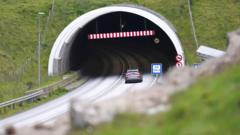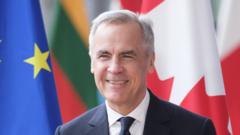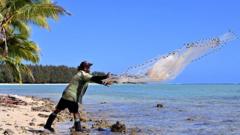Shetland Islands Council is exploring undersea tunnel projects to enhance transport links, seeking inspiration from the successful Faroese infrastructure that connects its islands.
Faroese Tunnel Inspiration: Shetland's Path to Economic Revival

Faroese Tunnel Inspiration: Shetland's Path to Economic Revival
Shetland Islands consider following Faroese model with undersea tunnels to rejuvenate growth.
The prime minister of the Faroe Islands, Aksel Johannesen, believes that Shetland could experience significant growth and revitalization by investing in tunnel infrastructure, similar to the 23 tunnels, four of which are submerged, that interconnected the 18 islands of the Faroes. As Shetland Islands Council moves forward with plans for tunnels to several remote isles, including Unst, it seeks to modernize its transport system away from aging ferries.
Johannesen emphasized to BBC News that infrastructure investment has proven beneficial to the Faroes’ economy and population growth. Criticism in Scotland arises from delayed government action, with voices like Anne Anderson, of Scottish Sea Farms, expressing frustration that tangible actions have lagged behind discussion. The salmon producer, noting a market share decline, advocates for Shetland to adopt effective strategies from the Faroes.
The Faroese have been developing their tunnels since the 1960s, with recent projects including a 7.1-mile tunnel featuring the world’s only undersea roundabout. This infrastructure has drastically cut travel time between islands and bolstered economic activity. Tunnel builder Andy Sloan supports replicating these achievements in Shetland, where the installation techniques employed could effectively address geographical challenges.
The demographic advantages of tunnels, as noted by Professor Erika Anne Hayfield from the University of the Faroe Islands, enhance island living while allowing residents easy access to employment markets. Shetland, with its own rich resources and connections to sectors like fisheries, aims to replicate those benefits, as stated by council leader Emma Macdonald, who expressed optimism about the tunnels’ eventual transformational impact.
The Council has initiated a £990,000 feasibility study for tunnel projects to four islands: Unst, Yell, Bressay, and Whalsay, though exact costs remain unknown. With aging ferry services costing the council £23 million annually and struggling to meet demand, the tunnel idea proposes a more sustainable transport alternative.
Despite the challenges, including potential toll implementations, local sentiment seems open to tolling, reflecting current ferry service costs. Community member Pat Burns, initially concerned about the impact on island life, acknowledges a growing need for infrastructure improvements to sustain the community's connection and supply access.
As Shetland seeks to reconnect and innovate through infrastructure, the influence of the Faroes becomes a guiding blueprint for potential economic transformation.




















